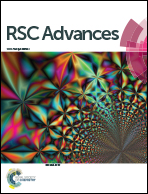An experimental study on the removal of submicron fly ash and black carbon in a gravitational wet scrubber with electrostatic enhancement
Abstract
It is of great significance to adopt a cost-effective and highly efficient method to capture submicron particles produced by small-scale industrial boilers. In this study, a middle-scale wet electrostatic scrubbing (WES) setup was built to investigate its performance in the removal of both fly ash particles and black carbon, with special attention to the submicron size range. Major factors including the particle properties and charging conditions were expatiated in detail to popularize this method. The results showed that the efficiency increase in black carbon is significantly higher than that of fly ash particles at the charging condition. For the case of droplet charging, the highest efficiency increase in black carbon in the submicron size range is up to 60%, while that of fly ash is only 40% under same conditions. In comparison with particle charging, droplet charging plays a more significant role in removing both fly ash particles and black carbon, which is beneficial for reforming conventional wet scrubbers. Moreover, more small particles could adhere to the surface of large fly ash particles after scavenging while this phenomenon was not found for black carbon due to the characteristic of fractal agglomerates.



 Please wait while we load your content...
Please wait while we load your content...